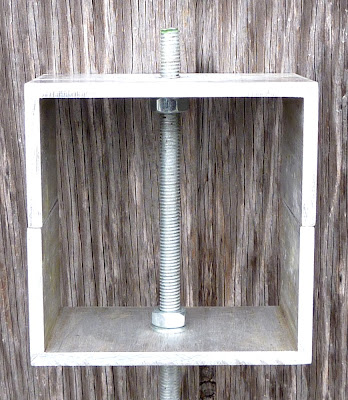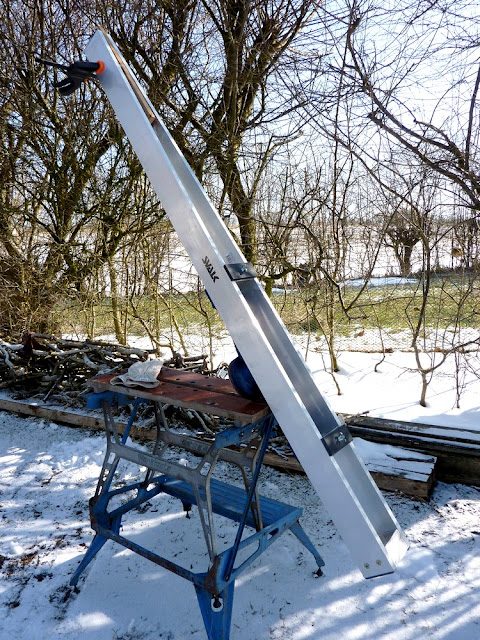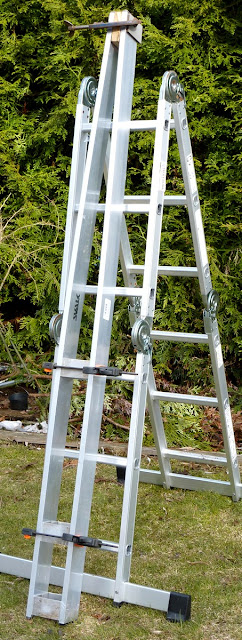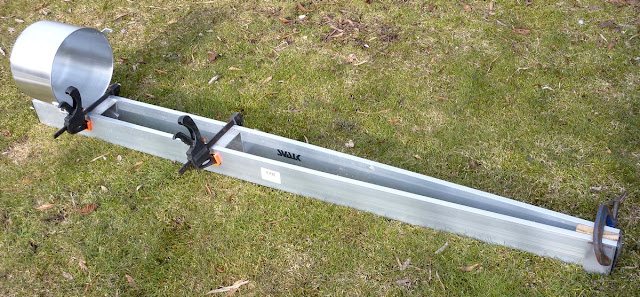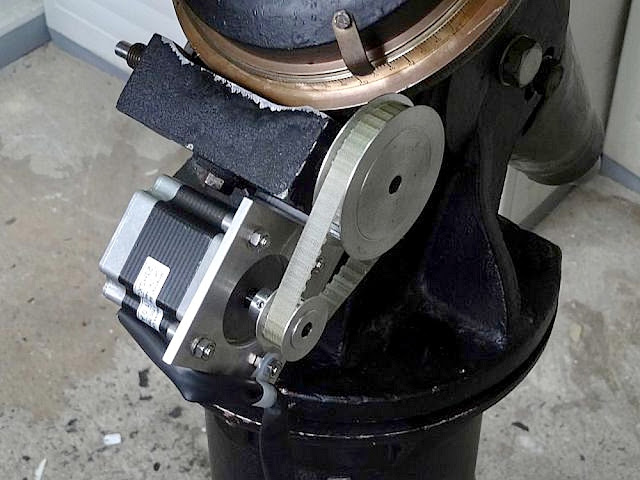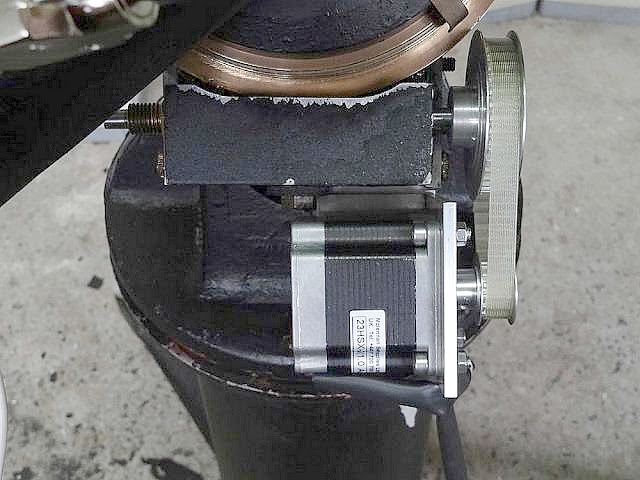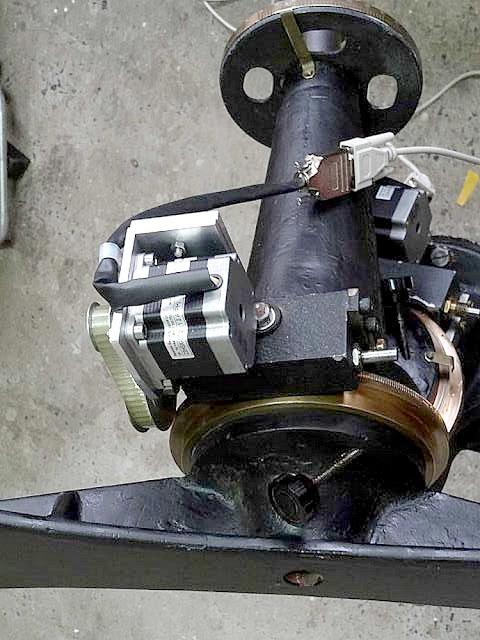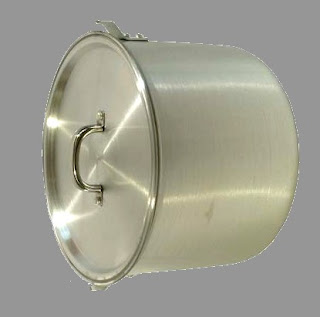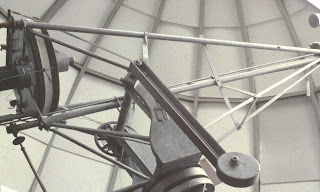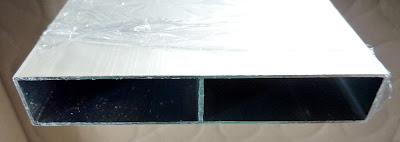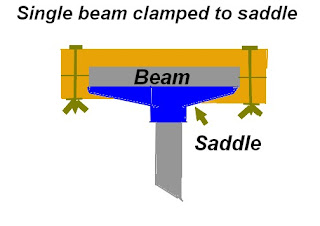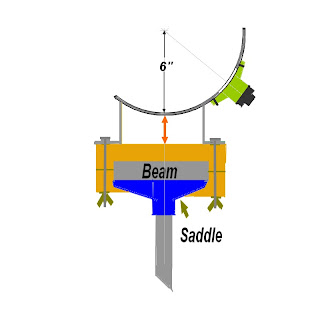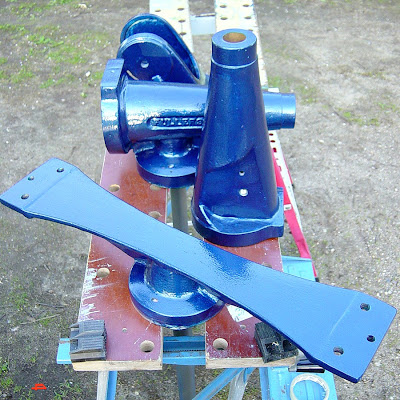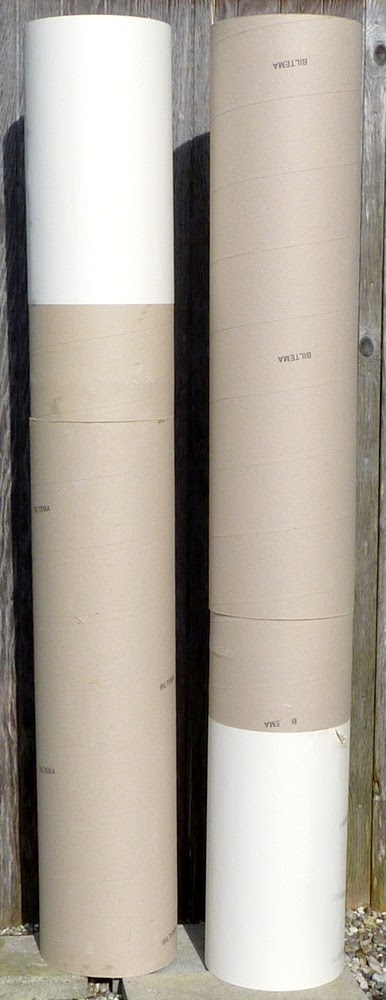*
[16]
I had another idea about attaching the OTA beams to the MkIV's saddle. I didn't want to attach anything to the OTA itself because it would add to its weight. If I fix a threaded rod(stud) to each end of the saddle I can pass the rods through each box section spacer. If I drill the channel sections I can pass an alloy tube through the holes and rivet each end flush with the box spacers. This will ensure the boxes hold their shape. The studs can be tightened down on a top plate which bridges the beams, compressing the box spacers and beams simultaneously onto the saddle.Since the box spacers are not attached to the beams I can slide the OTA along on the 2' spaced boxes. Then rotate the top plate over the beams and do up a wing nut on top of each stud when OTA balance is achieved..
I suppose could leave the box spacers permanently on the saddle. This would protect the tarpaulin over the mounting from being stabbed by the studs. Though this would require I add another spacer beyond the saddle on the OTA towards the focuser end. Otherwise I could not drop the beams over the box spacers due to the inadequate spacing between the beams. While it would be just possible to force the beams apart to go over the box spacers it is not something one ideally wants to be doing. Not while lifting the OTA into place without a third hand.
I had years of fitting screws through holes in mounting saddles and then doing up wing nuts. I have absolutely no intention of returning to such foolishness. I could mill a 2' /60cm long dovetail on the lathe. To go on top of the MkIV saddle. That would require making dovetail clamps to go on the OTA. Unless they were fitted closer together there would be no room to slide up and down on the saddle. Which seems a backward way of doing things when a 2' long saddle is available. Why handicap the MkIV with an inadequate telescope fixing?
I had a better idea than using alloy tube spacers for the boxes. I drilled and tapped the top and bottom channel profiles with an 8mm thread. Once the channels were threaded onto the studding with two washers and nuts, in between them, I tightened the profiles together. Then tightened each lock nut with a spanner to fix the channels into the box spacer shape. The nuts will stop the spacer box from being crushed out of shape by the wing nut.
A box spacer will be permanently attached to each end of the MkIV's saddle. When I want to attach the OTA the beams will be placed over the two boxes spaced 2' apart. Then I shall simply rotate 130mm long Tufnol top plates by 90 degrees and tighten a wing nut to hold the OTA fast to the saddle. No tools required and the wing nuts are always in place. Rather than having to be threaded on each time in the dark.
 Removing the two boxes from the OTA itself will save another pound in weight. If 8mm proves underwhelming I can easily step up the size of the studding and fasteners. This will have no effect on the OTA's weight because these two box spacers are no longer an integral part of it. The weight will have been transferred over to the mounting instead. Where it doesn't matter because the mounting is not being carried about.
Removing the two boxes from the OTA itself will save another pound in weight. If 8mm proves underwhelming I can easily step up the size of the studding and fasteners. This will have no effect on the OTA's weight because these two box spacers are no longer an integral part of it. The weight will have been transferred over to the mounting instead. Where it doesn't matter because the mounting is not being carried about.I have 8mm Nyloc nuts handy if the lock nuts should decide to work loose over time. I shall use a Nyloc nut below the saddle to hold the studding and boxes in place. Stainless steel studding is available but it is a bit harder to find stainless Nyloc nuts.
Despite the frost in the shed I have now fitted the box sections to the Fullerscopes MkIV saddle and drilled the Tufnol fixing plates. Now I stink of Tufnol again! All I did was bore a couple of 8mm holes in it! It reeks like burning Bakelite! I have an easy way of spreading the beams for when I want to fit the OTA over the boxes. I use a bit of planed 4x2 with rounded shoulders. With a batten handle attached I rotate the 4x2 between the beams. It locks on the shoulders with the beams spread enough to fit over the boxes.
I am taking a break while I decide whether to pop rivet the beams to another box section at the base of the OTA. Once I make the choice I am committed to drilling the beams as well as the box. I need a strong fixing here to stop the beams from separating. Riveting inside the box into the inside of the beams will avoid having ugly screws going right through the beams. The rivets will only be visible inside the box section.
It feels like a step too far without any real guarantee of success. Though I could fit small spreader washers over the rivets inside the beams before setting them. It should be possible with patience and long nosed pliers...
I have a choice between using larger, "climate" steel rivets or smaller 1/8" aluminium. I hope 16 -20 rivets in total should give a firm enough hold. The problem is that there will be a strong and direct, perpendicular pull between the faces of the material. Forcing them apart rather than imposing lateral sliding forces. If the thin beam material starts bulging away from the box it will be both ugly and catastrophic!
The alternative of using lengths of through studding (or long bolts) with load spreading washers and nuts just feels too crude (and even uglier) to contemplate. It would also add a little more weight. I'm not sure I can source such long screws/bolts with attractive heads in a small enough diameter not to stand out like a sore thumb. Particularly if they rust. I suppose could use domed and chromed brass nuts for a better appearance. Or socket head, 'climate,' furniture screws might be the way to go.
It was good job I hesitated over the pop-rivets. I realised that I would never have been able to separate the beams again. So I bought some 6mm studding and furniture screw threaded heads in gold 'climate' finish. I just have to be very careful marking and drilling the beams and box section to keep it all tidy. The shanks of the furniture 'nuts' need larger holes than the studding.
Despite the continuing frosts the beams and boxes were drilled and the studs and furniture "nuts" fitted. I was standing on fresh overnight snow, working out of doors, so my hands and toes are freezing now! I can also use the same studding and furniture "nuts" for the focuser end when I decide what to do about rotation. I'll fit the beams back onto the MkIV saddle boxes and take some pictures next. I may want to cover the bare threaded rods with lengths of aluminium tube to smarten things up. Talking of which, the cellophane protective wrapping is falling off the beams.
Click on any image for an enlargement.
*
*
